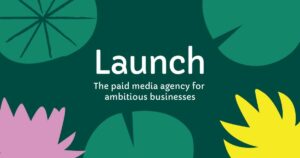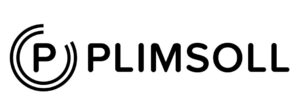Lately, it seems that creatives everywhere have been doing double takes as AI-powered tools start to seep into mainstream media. With DALL-E creations hot on the heels of graphic designers and free copywriting sites like Jasper looming over busy marketing teams, now’s not the time to stick our heads in the sand. Instead, we want to find out whether this new wave of computer-controlled craft is really a cause for concern – or if we can make it work in our favour.
First things first: When talking about AI potentially replacing us creatives, it’s worth examining what creativity really means. Albert Einstein defined it as “seeing what others see and thinking what no one else ever thought.” Many, including a lot of us here at saintnicks, are in agreement, viewing creativity as inventiveness, as our inherent ability to use imagination to originate something new. In fact, the Cambridge English Dictionary’s definition of creativity is “the ability to produce or use original and unusual ideas.” This human ingenuity is difficult to replicate – and the reason why icons like Beethoven, Maya Angelou, Matisse, the Wright brothers, or Wes Anderson are so revered.
On the contrary, others (like Steve Jobs, for example) view creativity from a more practical point of view. Jobs said, “Creativity is just connecting things. When you ask creative people how they did something, they feel a little guilty because they didn’t really do it, they just saw something.” That implies creativity is just a skill that can be learned and developed over time using reference points as inspiration. If humans, therefore, only build on what they have learned and what others have done in order to be creative, then it’s easy to argue that AI, too, can be creative. Because that’s essentially what AI does – it takes existing information (data) and, using clever algorithms, generates fresh, new content. But we’ll get to that a bit later.
In the defence of creatives, I believe there’s more to it. Sure, creativity is original, inventive, ingenious – maybe even learned. But it’s also intentional. It’s emotional. It’s contextual. As a copywriter, for example, I’m able to write with foresight and intuition. I know that an audience is likely to prefer one tagline over another, or laugh at a certain word, or be touched by a speech, simply because I share the same human experience as the people I’m talking to. I’m sentient. I consciously want my readers to feel something, I can intend for my words to elicit a response.
As humans, our thoughts, our memories, our physical sensations and the environments that surround us play huge, important parts in our lives. It’s our creativity that enables us to make connections between these things. When we create art – and I mean art in its loosest sense here, i.e. anything that’s an expression of creativity – we are either trying to discover something about ourselves, make sense of the world, affect our audience or express our thoughts and feelings. We have an innate human desire, an urge to create something meaningful.
A machine can’t do that. It doesn’t have the capacity for free thinking, nor does it have emotional intention. It can’t look at its audience and think, “I want my art to make you laugh or cry, I want to start a discussion around this topic, I want to comment on the state of the world.” Even the smartest AI can’t independently create art with meaning.
So, how can AI still be a threat to creatives if it can’t have an intention? Well, let’s look at the world of visual art for a moment.
Those who recently attended Glastonbury Festival may have crossed paths with Ai-Da, an artist who created portraits of the four headlining acts during a live painting demonstration. Although ‘live’ may not be the right word for it. You see, Ai-Da is a robot. The world’s first ultra-realistic artist robot, in fact. She uses cameras in her eyes, AI algorithms and a robotic arm to draw, paint, sculpt and perform poems. For years, she’s travelled the world, displaying her artwork in galleries, talking about her experience as a humanoid artist. You can even follow her on Instagram.
While, at first glance, Ai-Da could be mistaken for something from the year 3000, the AI she uses to create her art is quite simple. Allow me to get a bit technical here. You see, there are two different types of algorithms that can be used to create images through AI. The first one is Neural Style Transfer – where AI applies the style of one image to another. The Mona Lisa recreated in the style of Kandinsky. A photograph of an avocado re-styled as Warhol’s pop art. A pencil sketch turned into a Picasso. In order to function, the Neural Style Transfer needs both images as reference points to create its final product. This is what Ai-Da does, too. Using her ‘eyes’, she receives a reference image which she then replicates in her own, pre-programmed style. To really wrap your head around it, you can think of Neural Style Transfer as a fancy Instagram filter. Still with me?
Then there’s Generative Adversarial Networks – or GAN, for short. Unlike Neural Style Transfer, GANs can create original images from scratch. Well, sort of. GANs work by predicting an outcome based on a certain prompt. Using a set of data, they generate new examples that could plausibly fit in with the original data. So if the dataset is Van Gogh’s 900 paintings, the GAN would generate a new original image that looks like it could fit into a Van Gogh collection.
The results of GAN are pretty successful. So successful in fact, that, in 2018, Christie’s became the first auction house to offer a work of art created by an algorithm – which sold for a whopping $432,500. The artists behind Edmond de Belamy, as the artwork is called, are French collective Obvious. Using a dataset of 15,000 portraits from WikiArt, painted (by humans) between the 14th and 20th century, Obvious’ GAN created a new piece of art depicting a somewhat-blurry gentleman.
DALL-E is currently not available to the public – but the concept quickly took on a viral life of its own when Boris Dayma, a machine learning engineer, created the more accessible DALL-E mini (now called craiyon). Trained on much smaller amounts of data than DALL-E, craiyon’s machine learning improves day by day based on information inputted by its millions of users. For now, the resulting images are, at best, suited to meme culture – but as these technologies develop, it’s easy to see how they could become a part of everyday professional life. Print ads, book covers, blog headers, social posts, stock imagery, web content… the possibilities are endless. So where does that leave us?
I think the answer lies within the execution. All of these technologies, from DALL-E to Jasper, rely on prompts. They require us – the humans – to do the big thinking before they can switch on and start churning out their art. And it’s within the prompt that true creativity really lies. It’s not the machine that came up with the idea to have steampunk teddies go grocery shopping, it’s the person. The prompt satisfies both our aforementioned definitions of creativity – it requires imagination, and an ability to come up with something original, but it also requires a connection to be made, as Steve Jobs said. AI is the executioner, the maker, but we are the originators, looking at things differently, thinking up unimaginable things. To find the perfect image, you need to provide the perfect prompt. If AI can’t originate, then we creatives are still needed.
Now that we’re safe in the knowledge that AI, for the time being, isn’t going to come for our jobs entirely, we might even be able to look at how it can enhance our work and make us better. As OpenAI’s CEO Sam Altman described it in an interview with the New Yorker, AI can – and should – ultimately just be treated as “an extension of your own creativity.”
In agency life, a lot of time can be wasted during the original concepting phase when all you really want to do is spit-ball ideas and get your clients’ reaction. Tools like DALL-E can be a great help to you if you’re short on time but want to present a few visuals to illustrate an idea. Even if it’s just a word on a shop front or a puppy wearing a hat. It gives a lot more power to the “What if?” when suddenly that question can be answered in minutes, rather than having to mock it all out on photoshop for hours. Plus, you’ll never have to trudge through a stock image library ever again.
One of the most remarkable features of DALL-E is its ability to make edits to an image it has already created. Want to see what a flamingo would look like inside of the pool rather than next to it? Just tell DALL-E to move it around. Boom. Little tweaks that can take up annoying amounts of time can be executed with a few verbal prompts.
Writer’s block can be one of the most debilitating experiences for someone whose livelihood depends on how many words they can get down in an hour. AI tools like Copy.ai can act not only as a timesaver when deadlines are looming but also serve up inspiration when you’ve been staring at a blank page for far too long. Using a link, a couple of words or a simple description, Copy.ai can generate headlines for Facebook, brand mottos, meta descriptions and more. It even lets you rewrite existing text in a different tone. The output is never final-product worthy and definitely needs a human eye – and hand – to finish it off for a client, but it’s a great tool for getting that pesky first draft out of the way. Full disclosure: I actually used Copy.ai myself recently to come up with some alternatives for a Call to Action button – and it worked a treat.
So, there you have it. Whilst AI might come off as a bit of a scary, magical beast at first, it can actually serve as a handy little tool to keep our creative juices flowing. And no, I don’t think it will be replacing our creative team anytime soon. We’re far too much fun in the office.
To chat with our team or learn more about saintnicks, head to www.saintnicks.uk.com.
In episode 13 of WithinDigital, Adapt’s Nick Livermore is joined by Joel Strohmeier, Senior Accessibility Consultant at Bristol Strategic UX agency, Nomensa.
Together they discuss…
Our creative and digital industries are facing a critical shortage of developer skills right now, particularly when it comes to Web3 developers, with Web3 developers only representing 1% of worldwide devs. Yet there’s so much potential for positive, disruptive change. Collectively we need to up-skill our teams to realise that huge potential.
But WTF is Web3 and why should we care?
Simpleweb is hosting a month-long virtual festival throughout October to help to demystify Web3 and see past the nonsense. The goal is to onboard the next generation of Web3 talent across the UK. Similar to a hackathon format, they’ll be helping agencies, developers and UX teams learn the fundamentals and begin their Web3 journey, using a range of Web3 tools and best choice blockchains.
Participants will learn about Web3 and its benefits to help build expertise and extend product & service offerings, and agencies can enter individuals or teams who will be able to work together and bring their collective knowledge back to share with others. They’ll also receive an NFT certificate of completion, as well as get the chance to win a number of prizes across different categories. It’s free to join, and could contribute to agencies’ CPD efforts as well as innovation endeavours.
Another opportunity for us to pull together to put Bristol on the map, supporting our creative and tech talent and building an even stronger community. Why wouldn’t you?
https://www.meetup.com/simpleweb/events/287735158/
Seven Bristol Creative Industries members feature in a list of 50 of the most innovative entrepreneurial companies in the south west region.
The latest edition of EntreLeague was announced at the recent EntreConf event for entrepreneurs. Organisers MediaClash said:
“This diverse range of companies indicates how thriving the entrepreneurial scene is, covering multiple sectors from tech to media, property, health, ecommerce, sustainability, cosmetics, finance, data, food and much, much more.”
The businesses were chosen by a diverse range of experts from organisations including Bristol Creative Industries, Citrus HR, Invest in Bristol and Bath, Portobello Brewery, Rocketmakers, SetSquared, Storm Consultancy, University of Bath and Vidcomms.

“One day it will be possible to buy delicious, authentic home-cooked food from local people, wherever you are in the world. We are already doing this in Bristol and plan to launch in six new cities in the coming year.
“Living amongst us, in our communities, talented people are making extraordinary food in their own homes. All About The Cooks is an online marketplace which enables them to share that delicious food, and the stories that go with it, with people near them and make some money too.”
See All About The Cooks’ BCI profile here.
————————————————————–

“From our humble beginnings back in 2008 we have always stayed true to our belief that happiness comes from loving what you do. This ethos has resulted in a thriving, award winning creative agency working with some of the biggest clients within the video games and entertainment sectors.
“Diva is packed with amazing people, who combine their professional talents with their favourite pastimes and we believe that every day should be filled with fun and games.”
————————————————————–

“We use technology and creativity to help startups blossom and achieve their goals. Every project is different so we’ve built a set of tools and sub-processes that we employ efficiently for each situation.
“We believe in original thinking, clear communication and simple action. Working closely with you to inspire, guide, create and grow your ideas.”
See Gravitywell’s BCI profile here.
————————————————————–

“Launch is a paid media agency that delights ambitious businesses by achieving challenging growth forecasts. As a Google Premier Partner (the top 3% of agencies in Europe), we leverage the latest tools and techniques to maximise results for our clients with paid media.
“Our Conversion Rate Optimisation service ensures users are more likely to take key actions once they reach a website, and our data expertise provides in-depth insights to inform the wider marketing strategy – as well as ensuring compliance with the latest privacy laws.”
See Launch’s BCI profile here.
————————————————————–

“Plimsoll is an ambitious global content company. Our premium shows entertain and thrill audiences around the world. We value excellence and kindness and promote creativity, inclusivity and diversity.
“We are passionate about ensuring our opportunities are accessible to a wide range of people. We believe that diversity of thought, experience and talent are key elements of the creative process and always promote equality, respect and inclusivity across the company.”
See Plimsoll Productions’ BCI profile here.
————————————————————–

“StatsBomb was founded in January 2017 to provide football data and analytics to clubs, media and gambling companies. StatsBomb continually undertake new research and are well known in the analytics industry for providing unique insights into the game.
“We have developed our own proprietary, industry leading data collection and analytics software with a user-friendly high-vis front end.”
See StatsBomb’s BCI profile here.
————————————————————–

“Yuup is a new digital marketplace for local experiences in Bristol. We help curious customers discover unique and brilliant Bristol experiences.
“We are a small friendly team, with big ambition based in Bristol. Our mission is to champion small businesses and independent hosts, whilst building a supportive community and of course, deliver amazing Bristol experiences.”
————————————————————–
Not yet a member? Join Bristol Creative Industries from only £4.50 a month.
The Enterprise Sessions is a new content series led by Prof. Michele Barbour Associate Pro Vice-Chancellor: Enterprise and Innovation at the University of Bristol.
The series has been created to inspire entrepreneurs and help them to realise impact from their ideas. Michele interviews founders, researchers and academics from different disciplines and career stages who’ve been part of the University’s Enterprise ecosystem. Each episode is a treasure trove of information covering a range of topics from funding, licensing and IP, consultancy, contract research and business incubation.
Guests include Konstantina Psoma, Professor Wuge Briscoe, Professor Roberta Guerrina and Dr Tom Carter.
Bristol now tops the list of UK universities for the return on investment achieved by spinouts and is ranked in the top 3 for equity investment.
Prof. Michele Barbour said: “The University of Bristol has an impressive track record of enterprise and innovation and we’re keen to share that knowledge within our community as well as with a wider audience. The Enterprise Sessions is a new content series that brings to life the personal stories of spinout Founders and how our enterprise ecosystem has them.
Firehaus took our idea and created a branded content series, introducing the broadcast-style interview approach, as well as the name and look and feel. The approach has allowed me to develop rich conversations with our interviewees and showcase their experience of our ecosystem which will be of huge benefit for anyone involved in research, innovation and enterprise.”
Nick Barthram, Strategy Partner at Firehaus said: “Firehaus has worked with a range of organisations in the Research, Innovation and Enterprise space, including UKRI, Made Smarter Innovation and The University of Bristol. Consequently, we’ve developed a clear understanding and methodology to ignite opportunities at the intersection of academia and industry”.
Strategy, Concept and Art Direction: Firehaus
Film Production: JonesMillbank
Employee engagement is an efficient business strategy. Happy, engaged, and resilient staff is the ultimate goal, but it’s easier said than done.
There isn’t a one-size-fits-all solution to employee engagement. It’s a mix of rewards, recognition, wellbeing, and community-building. Yuup provides a bespoke solution to each of these concerns surrounding employee engagement:
Employees are the heart of your business and the reason you exist. They’re also a significant investment, so it makes sense to invest in them as well.
Yuup offers a solution for employee engagement that goes beyond traditional perks such as free lunches or flexible working hours.
Based on research into what employees want from their employers, Yuup provides businesses with an innovative way to engage their teams by giving them recognition and rewarding them with things to do that are enriching and personal whilst stimulating the local economy and supporting small businesses.
Yuup is an online marketplace that offers a range of experiences that are perfect for businesses both big and small.
From team-building days to performance rewards and from staff wellbeing experiences to ways to celebrate big wins. It’s a way for businesses to engage their staff in ways they may not have been able to before.
📣 Introducing The MUZA Collective for Bristol & Bath-based Creatives 📣
Did you know the Creative Industries is one of the fastest-growing sectors of the UK economy, contributing over £111 billion every year? That’s almost £13 million every hour! But despite this impressive growth, work in the creative sector can be extremely precarious… especially for freelance creatives.
Sick pay? Holiday pay? Income security? IR35? Taxes? etc.
As part of our fourth-year innovation project at the University of Bristol, my co-founder and I (Harry Ellis) set about changing this narrative. We immersed ourselves in the region’s vibrant creatives communities, collaborated with experts from Nesta, The RSA and Creative UK, and have developed a solution that provides the necessary securities that freelancers typically miss out on. Introducing… The MUZA Collective.
🚀🚀🚀
The MUZA Collective is a social enterprise concept to support Bristol and Bath-based creative freelancers by combining cooperative principles with the protective salaried status provided by a formal employment contract. Importantly, while our freelance members benefit from improved social security, automated tax/insurances and statutory employment rights, our shared enterprise does not sacrifice their autonomy as they are still in control and work on their own terms.
Our unique offerings:
⭐️⭐️⭐️
Sound interesting? Please register your interest today (it’s free, quick & easy!)
In order to move this project from concept to reality, we’d like to invite your support. By expressing your interest today, you can provide us with a valuable proof of desirability, which is vital for the next stage of our project: development!
Please express your interest at: https://www.muzacollective.uk/expression-of-interest (simply your name and email!)
If you have any questions or would like to find out more, don’t hesitate to get in touch!
– Harry and Frankie
Please note: Since publication this crowdfund has closed. £988,776 was raised in 28 days with Yuup reaching 131% of its desired fundraising target.
Yuup, the Bristol-based online local experiences marketplace, has been offering the city’s creative community a platform to generate income through hosting experiences since it was founded in September 2020.
In just a year company has grown from supporting just under 40 experience hosts to now being a community with over 270 people and small businesses and 500+ experiences to enjoy throughout Bristol city.
On Yuup’s platform you will find anything from unicycle lessons to rum tasting, wild winter swimming to hot air balloon rides, and pottery making to fresh pasta making masterclasses. Each one of these unique experiences is hosted by a local person that can’t wait to share their skills and passion with new people.
The platform has seen side-hustlers and hobbyists turn their favourite thing to do into a business and their main source of income. In the past year, Yuup has generated over £450k of income for local people and small independent creative businesses in the Bristol and Bath region.
Maria Fernandez, from Healing Weeds, hosts foraging workshops in Bristol. Her experiences teach guests how to identify seasonal wild produce and how to make balms, medicines, cordials, and elixirs from the foraged harvest. Using Yuup, Maria was able to change her career in order to properly pursue the thing she loves. She said:
“Yuup helped me turn my hobby into a business and Healing Weeds is now my main source of income.”
Since launching in the middle of a pandemic, Yuup has been used by Bristol creatives to help their income streams and businesses bounce back from lockdown and the effects of the pandemic.
The drop in economic activity within the UK in response to the pandemic impacted SMEs and the self-employed significantly in comparison to their larger business counterparts.
Local businesses were forced to adapt in order to survive. For indie businesses that could facilitate experiences, Yuup provided a platform that allowed alternative revenue streams to the local businesses that were struggling to achieve their pre-pandemic footfall.
Alice from Trylla shop on North Street joined Yuup early on in order to use the platform as a kickstart to her business’ post-pandemic recovery. Her pottery making experiences have been so popular that Alice has since hired new staff to help support the demand for her pottery classes on Yuup.
Yuup’s positive social impact extends to platform support, marketing, and a ticketing system for charity events and fundraisers. Yuup’s recent collaboration with Belly Laughs comedy festival 2022 raised over 22k for charity and generated over 10k of revenue for local restaurants and bars. The company have also recently supported grassroots charities such as MAZI Project and KASK’s Ukraine Fundraiser.
At the start of February 2022, Yuup announced that the business will be opening up investment to the public to allow for the company’s scaling up operations this year. There are a number of ways that you can join the Yuup community. As an investor, as a Yuup host, by introducing a Yuup host, or as a customer.
How to join the Yuup community as an investor: Yuup’s crowdfund is open until March 31st, and the funds raised will go towards reaching hundreds more potential experience hosts in Bristol and Bath, generating income and jobs for locals and the communities that need it most.
Yuup will also be launching in its second city this summer, connecting creatives, makers and dreamers from another UK city to the Yuup community.
You can join the crowdfund from as little as £20. You will own a part of Yuup and participate in the financial rewards of share ownership. Your investment will support local independent businesses whilst helping even more people to discover incredible things to do in their local area. Visit the Yuup crowdfund webpage to watch the investment film and find out more here: https://invest.yuup.co/
How to join Yuup as an experience host: If you are a creative or passionate local person, you could turn that love of something into an experience for others to enjoy. Yuup helps people create, promote, and host experiences.
It’s free to join the platform, and you get simple tools, a host portal, and marketing support and investment. A small commission is taken from each sold experience, so Yuup only makes money when you make money.
The scope for experiences is almost boundless. From food and drink tours to cooking classes, craft workshops to cinema nights, outdoor adventures to indoor wellbeing sessions. If you love it, why not share the experience? Get in touch with the Yuup team about your future experience here: https://www.yuup.co/pages/join
How to introduce an experience host: Do you know a wicked weaver? A crowd-pleasing cook? A passionate painter? A cool climber? Refer your friend to the Yuup team and help them turn their passion into a business. Refer an experience host here: https://www.yuup.co/host_referrals/new
How to join the Yuup community as a customer: Just browse yuup.co and pick something that you would love to do! Alternatively, you can also buy experiences as gifts, purchase gift cards, or use Yuup’s experiences in your employee rewards scheme.
Every January the digital marketing industry is ablaze with talk of new trends that will shake up how we do PPC. 2022 is no different.
And the pace of change is, almost unbelievably, accelerating. 2022 is set to be a big year for PPC – keeping up with Google’s new-and-improved policies, like the removal of expanded text ads (ETAs), and the world domination of TikTok can seem near impossible.
So, to help 2022 feel a little less daunting, we’ve picked the top 5 trends you need to focus on this year and how to integrate these into your PPC campaigns.
Google Analytics 4 (GA4) is the latest analytics tool from Google, and it’s better equipped for the future than the previous model, Universal Analytics.
This is because GA4 has more advanced tools and reporting such as predictive insights, cross-device measurement capabilities, deeper integration with Google Ads, and more granular data controls.
Google’s plans to phase out third-party cookies by 2023 shouldn’t be news to you. In a cookieless world, it will be even harder to track consumer activity. So, in response to this, Google is offering “Enhanced Conversions“, which will improve your conversion tracking.
If you haven’t been focusing on offline conversion tracking, now is the time to do so. Most brands today run both on and offline, and some businesses forget that customers still make purchases offline.
If you just use traditional conversion tracking methods, then these offline purchases would not be linked to your online ad campaigns. Without this knowledge, you won’t be able to accurately measure the success of your campaigns.
In 2022, Google will continue to create and promote AI, so it’s vital you keep up with these changes. One of the big changes we will be touching upon in a moment is the changes to expanded text ads.
AI and automation are still quite new to the digital marketing world, but they will be at the forefront of PPC over the next few years. They are particularly useful for those of you looking to automate certain menial tasks to free up your time.
AI combined with automation can help you create impactful advertising campaigns while also improving your conversion rates. These concepts can dynamically create your ads based on user intent and website content, automating the bidding process, and automating ad success reports.
The world of PPC will experience a big change in June 2022. When June arrives, you will not be able to create or edit ETAs in the Google Ads Interface.
Google’s solution to this change is responsive search ads (RSAs) and dynamic search ads (DSAs). These will become Google’s default search ad type.
The role of machine learning in automation is the cause of this change. And this is where Google’s RSAs and DSAs come into play. As you would expect, both these ad types rely on automation.
Google will take the reins and determine the most effective headlines and assets supplied by you. These choices will be based on an extensive amount of data collected by Google from advertisers.
June is not that far away, so you need to learn how to use RSAs and DSAs now. Once you allow automation and AI can take control, you’ll have more time to craft new ad campaigns.
When you use RSAs you are handing over a great deal of control to Google, and this can feel scary… especially if you haven’t trailed this type of ad before. So, test what works for your brand now while you still have time.
You need to provide Google with accurate information to choose the best ads for your campaign. And to do this, test and discover the data you need to run an effective ad campaign.
We’ve touched upon this lightly already, but it needs to be explored properly. One of the biggest trends for the whole of the digital marketing industry is the departure of third-party cookies.
Google is planning to ban all third-party cookies by 2023, and this is going to dramatically impact the digital advertising landscape…
Up until now, marketers have been complacent with how they collect their data, seeing as third-party cookies made the process of collecting data so easy.
The thought of advertising without third-party cookies is daunting. But you need to think of this as a great opportunity. It’s one that offers great rewards for those of you who have already been prioritizing privacy throughout your customer service strategy.
Today, first-party data has never been so valuable, and the success of your digital advertising will rest on how you obtain your own first-party data.
And you can start using first-party data as an integral part of new algorithms for Google, Facebook, and other large eCommerce platforms.
Right now, TikTok is the fastest growing social media network with more than 1 billion active users per month. And its reach will only continue to grow in 2022 and beyond.
Advertisers can’t rely on one form of advertising anymore; they need to diversify their ads. And TikTok is the perfect platform to experiment with.
The world of advertising is always changing, and you need to move with the times and adapt your strategy if you want results. In 2022, you need to look beyond paid ads and explore other avenues.
Today, influencer marketing is one of the hottest trends in marketing, and TikTok is the leading platform bringing influencers and brands together.
Organic content posted by influencers tends to be successful. For users today, videos are more engaging, and they are more likely to trust an influencer’s opinion over yours.
However, there’s more to organic marketing than just influencer marketing. Take the time to improve your Search Engine Optimisation, or explore the world of digital PR. It’s also worth diversifying your content marketing strategy and promoting user-generated content.
This year is set to change the world of PPC as we know it. So, if you want to be at the forefront of these changes, you need to start adapting your PPC strategies now.
Audience numbers are growing, and you need to innovate your offering to meet this audience’s needs. And now you have new tools to play with, you can experiment and implement new and effective strategies in 2022 and beyond.
WithinDigital is an almost monthly digital marketing podcast, featuring in-depth interviews with experts in digital advertising, SEO, social media, and everything in between.
Click here to listen and subscribe to WithinDigital on iTunes>>>
Click here to listen and subscribe to WithinDigital on Spotify >>>
In episode 10 of WithinDigital, Nick Livermore is joined by Incubeta‘s Head of Measurement Consultancy, Kate Jervis, to chat about the ‘first-party data renaissance’ of 2022.
Data is at the heart of everything we do in marketing. And first-party data has been around for a long time. So, why in 2022 are we talking about first-party data like it’s this new thing?
Together, they cover…
This podcast first appeared on the Adapt Website here >>> https://www.adaptworldwide.com/insights/2022/withindigital-episode-10-the-first-party-data-renaissance
You need to load content from reCAPTCHA to submit the form. Please note that doing so will share data with third-party providers.
More Information